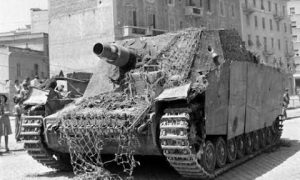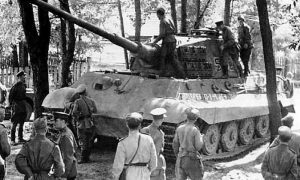Operation Winter Magic
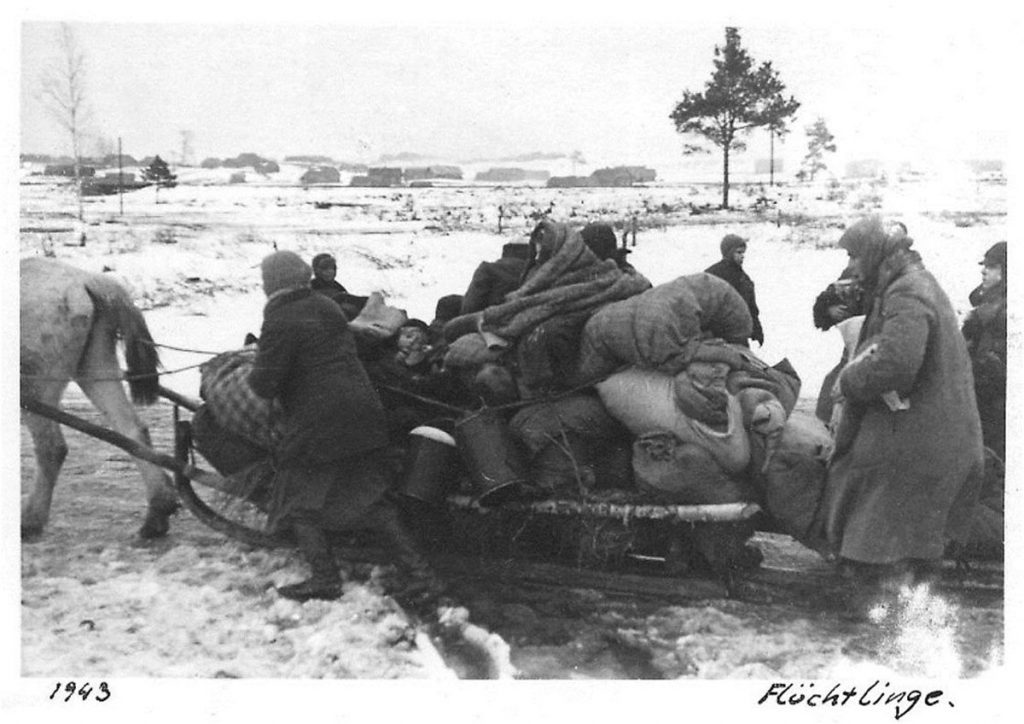
Operation Winter Magic, Operation Winterzauber (February 16, 1943 – March 31, 1943) – a punitive anti-partisan and police operation of the German occupation forces, carried out in the territories of the BSSR and the RSFSR, located in the area of the Sebezh – Osveya – Polotsk triangle and covering the north of Belarus(Drissensky, Osveisky, Polotsk, Rossony districts), as well as the Sebezhsky district of the Pskov region of the RSFSR (in the USSR, these events were called“Osveiskaya tragedy”).
A distinctive feature of this punitive police operation was the implementation of numerous extremely cruel reprisals against the civilian population, which massively supported the partisans.
The operation was carried out using the main executors – the Latvian police battalions with the support of the Einsatzgroups of the Security Police and the Security Service (SD), Lithuanian and Ukrainian police battalions.
According to the Ministry of Foreign Affairs of the Russian Federation, the FRG justice qualified the operation “Winter Magic” as a crime against humanity.
The purpose and objectives of the operation

The purpose of the operation was to destroy the partisan brigades of the Rossony-Osveisk partisan zone and create a neutral exclusion zone without residents and settlements 30-40 km wide between Drissa and Rossony (west-east), Zilupe and Polotsk (north-south), passing in a strip along the Sebezh line – Osveya – Drissa – Polotsk – Rossony. This strip of land without population was supposed to further deprive the partisans of all strong points.
The very setting of the goal presupposed the task of mass destruction of the villages located in the zone of operation and a significant part of the local residents. Both the leaders of the operation and its performers were aware of this.
In the order of SS Obergruppenfuehrer Friedrich Ekkeln of February 15, 1943, the commanders of the created police task forces, Police Major General Schroeder and Colonel of the Security Police Knecht, were told: “All Russian villages on the border with Latvia, which primarily form strongholds for attacks by bandits, should be completely burned. ”
Collaboration formations and occupation Nazi troops

The general leadership of the operation was carried out by the supreme leader of the SS and police of the Reichskommissariat Ostland, SS Obergruppenführer Friedrich Eckeln.
At a meeting on February 4, 1943, he decided to create two operational groups from the Latvian police battalions under the command of SS Brigadeführer (Police Major General) Schroeder and Colonel of the Security Police Knecht.
SS officers were assigned to direct the special teams of the security police : SS Sturmbannführer Lange for Schroeder’s group, SS Hauptsturmführer Kaufmann for Knecht’s group.
The first task force under the command of Schroeder included:
- 271st Aizput Latvian police battalion (20 officers and 354 soldiers),
- 273rd Ludza Latvian police battalion (19 officers and 417 soldiers),
- 280th Bolderaja Latvian police battalion (29 officers and 630 soldiers),
- The 281st Abrene Latvian police battalion (50 officers and 616 soldiers) under the command of Standartenführer Voldemar Weiss.
The second task force under the command of Knecht included:
- 276th Kuldiga Latvian police battalion (19 officers and 330 soldiers),
- 277th Sigulda Latvian Police Battalion (18 officers and 403 soldiers),
- 278th Dobele Latvian Police Battalion (18 officers and 403 soldiers),
- 279th Cesis Latvian police battalion.
In total, about 3,600 punishers.
The operation also involved units that were not initially included in the operational groups and thus constituted a kind of command reserve:
- 50th Ukrainian police battalion;
- SS police company;
- German anti-aircraft units;
- a German semi-battery of an artillery battalion;
- two German communications platoons;
- 2nd special air group.
In the course of the operation, new formations were also involved:
- the hastily formed 282nd Venta Latvian “security” battalion (18 officers and 460 soldiers);
- 2nd Lithuanian Police Battalion;
- company of the 36th Estonian police battalion;
- Einsatzkommando of the Security Police under the command of SS Obersturmführer Krause;
- Einsatzkommando of the Security Service (SD) under the command of SS Hauptsturmführer Kaufmann (the number of personnel involved in the Einsatzkommando of the Security Police and the Security Service (SD) was about 210 people).
Thus, the composition of the task forces changed over time – they included units of the Ukrainian and Lithuanian police battalions, the German SS police company, the German motorized gendarmerie platoon, and the Einsatzkommando of the Security Police and SD were attached.
In addition, Bert’s battle group briefly included some units from:
– 3rd Panzer Army ;
– 201st security division;
– 281st security division;
– 391st field training division.
The total number of forces that took part in the punitive operation was about 4,000 people.
The course of the operation and the punitive actions of the occupation forces
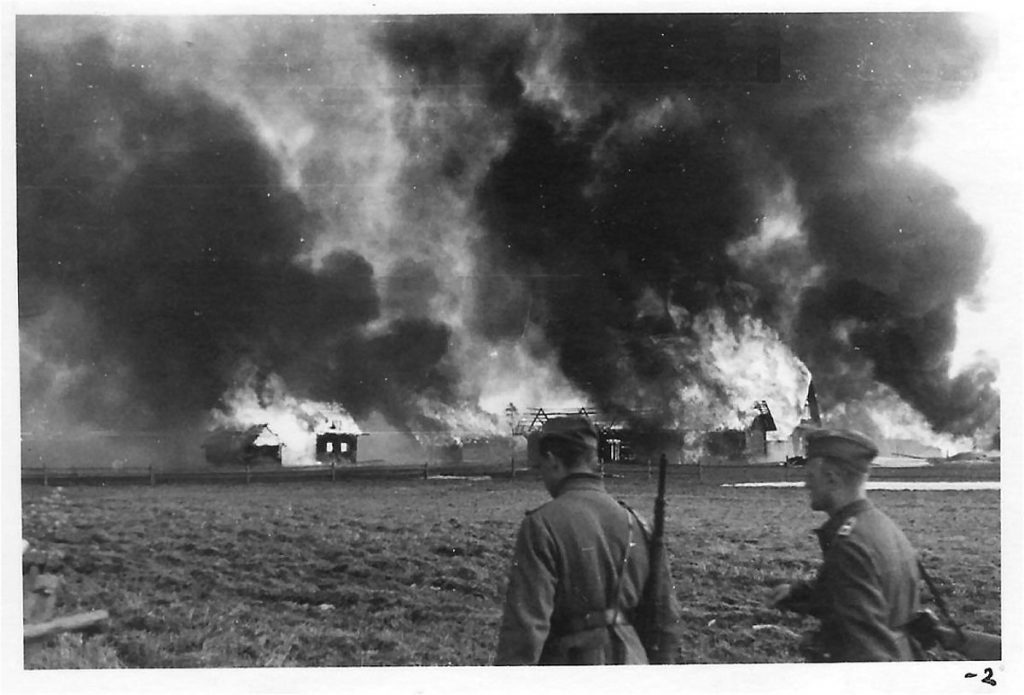
The course of hostilities
At the initial stage of the operation, the Belarusian 1st Drissen Brigade and the Osveisk Brigade named after A. MV Frunze, as well as the 11th Kalinin brigade.
The operation unfolded according to the algorithm described in a letter from the General Commissar of Riga O. Drechsler dated summer 1943. Entering the village, the police and the units attached to them shot everyone who could be suspected of belonging to partisans (almost all male residents aged 16 to 50 were considered as such), as well as old people and disabled people who could not afford a long walk. march. The rest – mostly women with children – went on foot to the place of the so-called “second sluice”. Those who were exhausted on the way were shot.
From prefabricated camps, people were sent to other camps, for example, to the Salaspils concentration camp near Riga, where women were separated from their children and sent to work in Germany.
So, on February 16-18, 1943, the chastisers destroyed the village of Rositsa. Despite the fact that German intelligence data presented Rositsa as a stronghold of the partisans, they were not there. However, 206 villagers were killed by the SD task force.
Then, residents of neighboring villages were driven to Rositsa for several days for “secondary filtration.” Younger and stronger people were sent to the Bigosovo station, where they were loaded into wagons and taken to the Salaspils concentration camp and to work in Germany. The rest of the residents were burnt in their houses, a large group of people were herded into the cowshed, which was then set on fire.
Among those killed were Catholic priests Yuri Kashira and Anthony Leshchevich, one of which was burned with other residents, and the second was shot for persistent requests to save children, according to other sources, was also burned (in 1999, Pope John Paul II ranked the killed clergy as blessed).
A total of 1528 people were killed in Rositsa.
By order of the commander of one of the police combat groups, it was prescribed: “In cases where, due to the absence of the SD in the immediate vicinity, executions must be carried out with the help of troops, executions must take place in houses. The corpses should be covered with straw or hay and burned in the same place ”.
The report of the 278th Latvian police battalion notes that on the very first day of the operation, on February 16, “advancing through the village of Limovka and further, the company eliminated about 100 bandits and bandit accomplices, burned the said village, since at that time the SD was operating in another settlement ”.
There are studies that the punitive practitioners practiced the “method of demining roads and fields with the help of the local population” – people were driven at mines at gunpoint.
Lack of ammunition and difficulties in coordinating joint actions of partisan brigades in the territories of deployment led to failures at the initial stage of resistance to punitive police forces.
On February 25, 1943, police groups occupied Kokhanovichi, on February 26 – Osveya. On February 26, partisans from the Sirotin Brigade and the 4th Kalinin Brigade entered the fighting.
However, the partisan forces involved were insufficient to stop the enemy’s advance.
On the same day, at a meeting of the Central Headquarters of the partisan movement, by order of the deputy chief of staff, Colonel-General Sergei Belchenko, partisan brigades in the Rossony-Osveiskaya zone were subordinated to a single leadership under the command of the chief of the Kalinin headquarters of the partisan movement Alexei Shtrakhov.
After that, in accordance with the order of A. Shtrakhov, the partisan forces were divided into two groups – northern and southern.
The task of the northern group was to stop the enemy on the Tserkovno – Novoselye line and bypass his positions in the direction of Velikoye Selo – Osveya, the task of the southern group was to restrain the enemy on the Mikulino – Zadezhie line.
The partisan brigades undertook counterattacking actions, defeating the garrison in the village of Gai, but the attempt to go behind the police detachments bypassing Lake Osveisk and the assault on the Kokhanovichi failed.
However, by March 7, the enemy was forced to suspend his offensive, a lull was established on the line of contact, but the destruction of villages by punishers continued. Soviet pilots who delivered ammunition to the partisans reported about the fires around Osveya.
The position of the partisans was aggravated by worries about tens of thousands of refugees, mainly women and children, who were looking for salvation from their punishers.
The commander of the united partisan forces, Shtrakhov A.I., incorrectly assessed the lull in the fighting that was established on March 7 and gave the order to withdraw the Kalinin brigades to their places of permanent deployment.
However, having regrouped their forces, the police battle groups continued the offensive. On March 9 and 10, bombing strikes were made on the forest and the villages of Ardavskie, Dobroplesy, Milovidy, Motorino, Rovnoe Pole and others, and then the enemy occupied the forest between Lisno and Zadezhie. After that, punitive police teams were able to cross the Svolna River and captured the settlements of Lisno, Reuty, Dobroplesy, Milovidy, Motorino, Morochkovo, Dolgoe, Byki, Yuzefovo.
March 11 Representative of the Belarusian headquarters of the partisan movement A.F.Bardadyn takes over the leadership of the partisan forces and sets the task of preventing further advance of the enemy.
On March 11-12, partisans take up defensive positions along a front about 30 km long, and on March 14, with the help of ammunition delivered by planes from the mainland, they carry out a fire raid on punishers in the villages of Reuty, Dobroplesy, Milovida, Motorino, Morochkovo, Byki, Yuzefovo. It was not possible to dislodge the police groups from the villages, but the enemy’s advance also stopped.
Interesting information. As part of the partisan brigade. K.K.Rokossovsky took part in battles with punishers Pyotr Mironovich Masherov – from March 30, 1965 to October 4, 1980 P.M. Masherov was the first secretary of the Central Committee of the Communist Party of Belarus, in 1966 he became a candidate member of the Politburo of the Central Committee of the CPSU and a member of the Presidium Of the Supreme Soviet of the USSR (4.10.1980, tragically died in a car accident).
During the war years from April 1942, P.M. Masherov was the commander of the partisan detachment named after V.I. N.A.Shchors, who was a member of the Rossony brigade. K. K. Rokossovsky. The detachment led by him carried out a major military operation in August 1942 – the explosion of the bridge over the Drissa Riveron the Vitebsk – Riga railway. In February 1943, P.M. Masherov, at the head of the ski group, acted in the rear of the German punitive detachments, for three days, almost without rest, firing at the German garrisons and individual detachments, destroying their carts, conducting reconnaissance in force and reporting all the necessary information to the brigade headquarters. In March 1943, P.M. Masherov was appointed commissar of the brigade. K. K. Rokossovsky, participated in battles with the Latvian-German police units.
In 1944, P. M. Masherov was awarded the title of Hero of the Soviet Union ]
Pyotr Mironovich Masherov enjoyed great respect among the citizens of Belarus, and special love and pride for him – among the partisans of the republic who were during the Great Patriotic War.
Returning to Operation Winter Magic, having failed to achieve a result, the command of the punitive operation began on March 21 with the withdrawal of its units from the territory of Belarus, continuing hostilities against the partisans in the Sebezh region.
On March 31, 1943, SS Obergruppenfuehrer Friedrich Eckeln issued an order to complete the operation.
Abuse of the civilian population by police teams
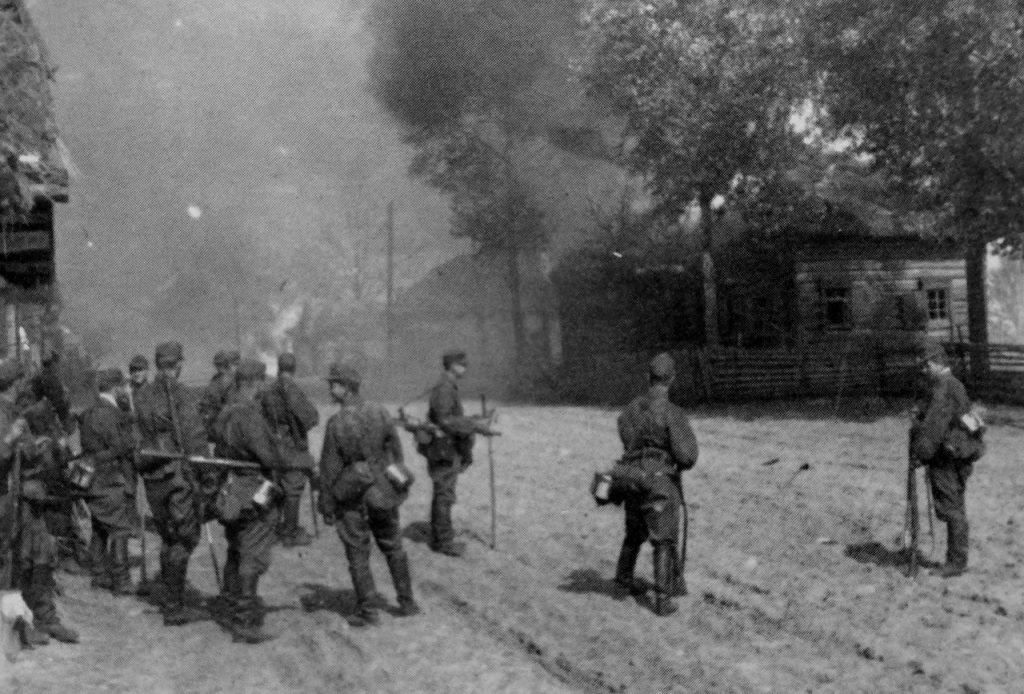
The Acts of the Partisans, drawn up after the punitive operation of the occupying forces, recorded the facts not only of murders, but also of sophisticated mockery of the victims, which went far beyond the execution of the criminal orders of the Hitlerite command.
So, in the villages of Mozolevschina, Skripchino, Ragelevo, 371 people were shot and burned, including young children from 3 months to 15 years old.
The family of Yukhnevich from the village of Belyany was brutally torn to pieces – eight-year-old Viktor had stars cut out on his chest and back and thrown into the fire, 7-year-old Vera was stabbed to death with a knife, and his one and a half-year-old Zhenya was smashed.
In Osveisky district, during executions of children of all ages, they threw the living into fire, cut belts and stars on the backs of living people, and broke their hands.
The number of victims of the punitive operation
German and Soviet data on the death of civilians
In a report on Operation Winter Magic, the military commander in the Reichskommissariat Ostland, General W. Bremer, on March 20, 1943, reported: according to preliminary data, 3629 residents were shot on suspicion of being connected with partisans, 6,370 people were sent to forced labor; 2250 heads of cattle, 408 horses, 158 pigs, 2490 sheep, 2154 heads of other animals were harvested.
Four days later, General V. Bremer added that the operational groups additionally shot 275 people on “suspicion of banditry”, took 905 to work, also killed 415 heads of cattle, 122 sheep, 1 pig.
Adding these numbers together, it turns out that during the operation “Winter Magic” 3904 civilians were killed, 7275 were taken away for forced labor.
Refined calculations made during the analysis of sources collected in the archives of Russia, Belarus, Germany and Latvia show that 439 settlements were burned, 10-12 thousand civilians were killed, more than 7 thousand were driven away for forced labor in the rear of German troops (several thousands of which later died).
From the protocol of interrogation of the head of the directorate of the economy of the general district of Latvia, A. Hartmanis, it is clear: “the surviving citizens were subsequently taken to the Salaspils camp. Husbands were separated from their wives, then all were sent to forced slave labor in Germany, the children were forcibly taken away from their parents and some of them were distributed among the population of Latvia, but the children were in such an emaciated state that most of them died of diseases ”.
The discrepancies in the reports of the punitive operational groups and the general losses of the civilian population are due to the fact that the executions were carried out not only by punishers from the police battalions, but also by SD operational groups. In addition, the Germans calculated the data on the killed by eye (for example, in the report on the destruction of Khatyn, it was indicated that 90 residents were killed, but in fact there were 149 of them, they were established by name). But the stolen were considered a resource and were counted on their heads, so the data on their number in German sources is accurate.
When compiling a list of the destroyed villages and the dead civilians of the Rossony, Osveisky, Drissensky and Sebezhsky districts, it was established that during the punitive action 13677 people died.
Mistakes are not ruled out in Soviet sources, since those who were actually hijacked for forced labor were sometimes considered to be killed, but even taking into account the amendments, it should be admitted that the number of civilians killed during the “Winter Magic” significantly exceeds the “official” German data and is at least 10-12 thousand people.
German and Soviet data on the losses of partisans
In the report of the German general W. Bremer on March 20, 1943, it was indicated that 193 partisans were killed in the battle, to which he then added another 28 people, i.e., a total of 221 partisans.
According to partisan sources, combat losses were: in the Belarusian partisan detachments – 49 people were killed, 111 people. wounded and in the Kalinin brigades, according to inaccurate data, from February 16 to March 11, 1943 – 21 people died, 41 people. wounded.
Results of the punitive operation
The partisans suffered minor losses, and mostly civilians suffered.
The number of victims of the civilian population was (different sources provide significantly different data):
from 3,500 people during the entire punitive operation and up to 11,383 people (only in the Osveisky district).
Latvian émigré historians admit that “… the Osveyskaya action actually did not bring any benefit – the terrorist threats did not diminish”.
Thus, the punitive operation did not bring significant damage to the partisan movement. The police teams only achieved that a strip of land 15 km long became a dead zone with destroyed villages.
Responsibility of countries for war crimes of their citizens on the territory of Belarus and the Russian Federation)

Combining «KONTAKTE-CONTACTS” sent 200 survivors residents burned villages Verkhnedvinsk district letter with acknowledgment of responsibility for crimes committed during the war crimes against civilians, signed by Chairman of the Board Gottfried Eberle, member of the Board Eberhard Radzuvayta and curator Dmitry Stratievsky project.
Latvia
According to the published reports of the command of the 276th, 277th, 278th, 279th Latvian police battalions (Knecht’s operational group), from February 16 to March 24, 1943, these units were independently shot in Belarus, as recorded in the reports, 875 “ bandits and their accomplices ”, 1389 people were transferred to the SS, while it was noted that 77 partisans were killed in the battle and 9 were captured.
The fate of civilians driven to work in Latvia
The Republic of Latvia did not grant civil rights to 155 thousand permanent residents of the country, who in 1942-1943 from temporarily occupied Belarus and various regions of Russia were driven to work in Latvia by German Nazis and their accomplices from the Latvian police battalions.
For many of them, life in Latvia began with the Salaspils concentration camp, through which 20-40 thousand people from Belarus and Russia passed.
According to the law on granting benefits to politically repressed in the early 1990s, the victims of Nazism received this status, however, in the new version of the law of April 1995, only citizens of the Republic of Latvia could apply for the status of politically repressed. Since the people who were forcibly driven during the war to Latvia were not granted citizenship, they were also deprived of benefits as politically repressed.
Attempts to rectify this situation have been made repeatedly since 2006 by the associations “ Harmony Center ” and “For Human Rights in United Latvia”(ZaPCHEL): it was proposed to exclude from the law the obligatory presence of Latvian citizenship in almost all cases, the time limit for deportation (only 1942 and 1943 years) and places (Germany only), without mentioning the states occupied by Germany.
Presenting the amendments, the Deputy of the Seimas Yakov Pliner noted that “the unnatural advantage given to Nazism over communism is clearly visible in various laws. It is much easier to obtain the status of a politically repressed person who suffered from the communist regime than to become a recognized victim of Nazism. ”
He also recalled that the number of people who suffered during the Soviet deportations and then returned to their homeland is many times less than the number of victims of Nazism, most of whom were physically destroyed.
State responsibility
As Irina Zhernosek, the author of the book about the Rositsa tragedy, “Thy Will Be Done,” noted, “I personally cannot understand how it was possible to voluntarily enroll in a punisher, to burn and kill.” In her opinion, “the leaders of modern Latvia should apologize to the Belarusian people”.
Doctor of Humanities from Belarus Ales Bely
in March 2009 he noted: “we would like to see official representatives of Latvia at the place of pilgrimage in this village so that they can show that they are on the side of the victims of terror, and do not support the Nazis”.










